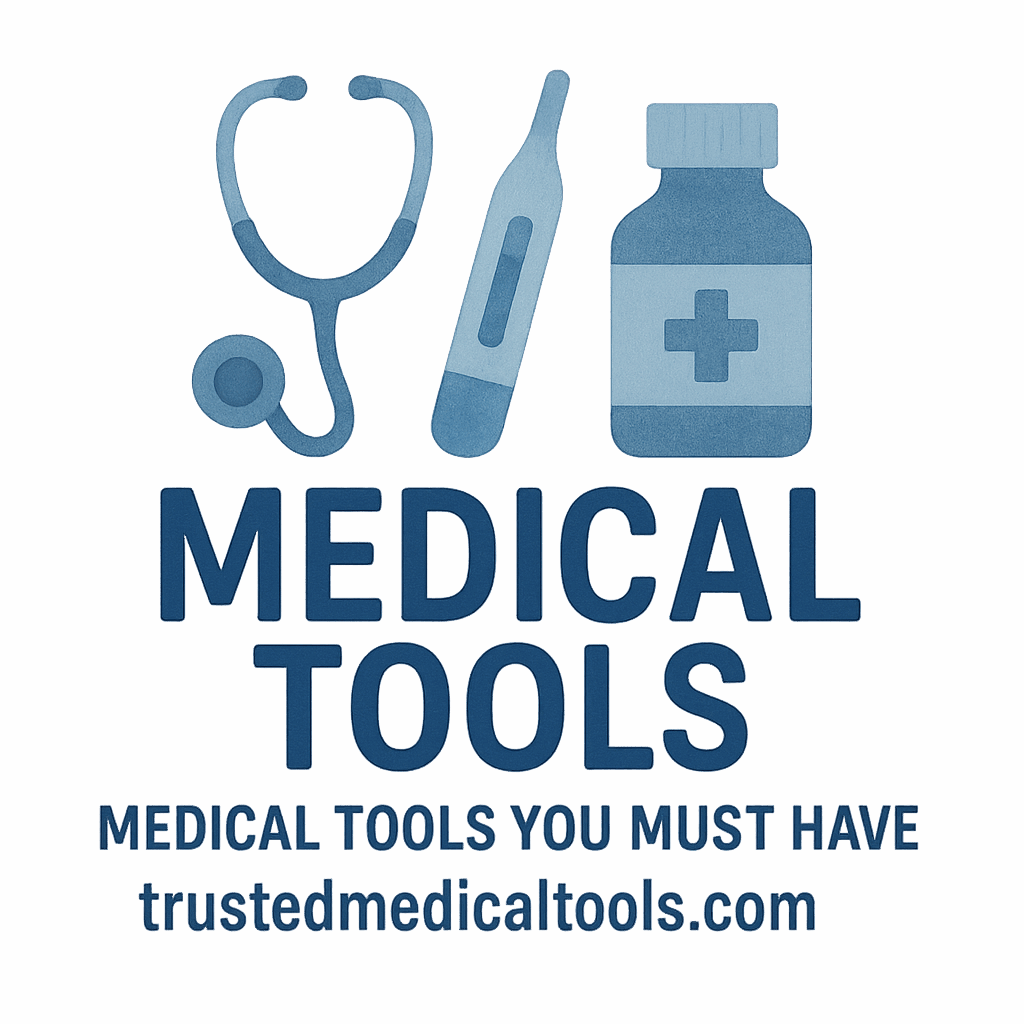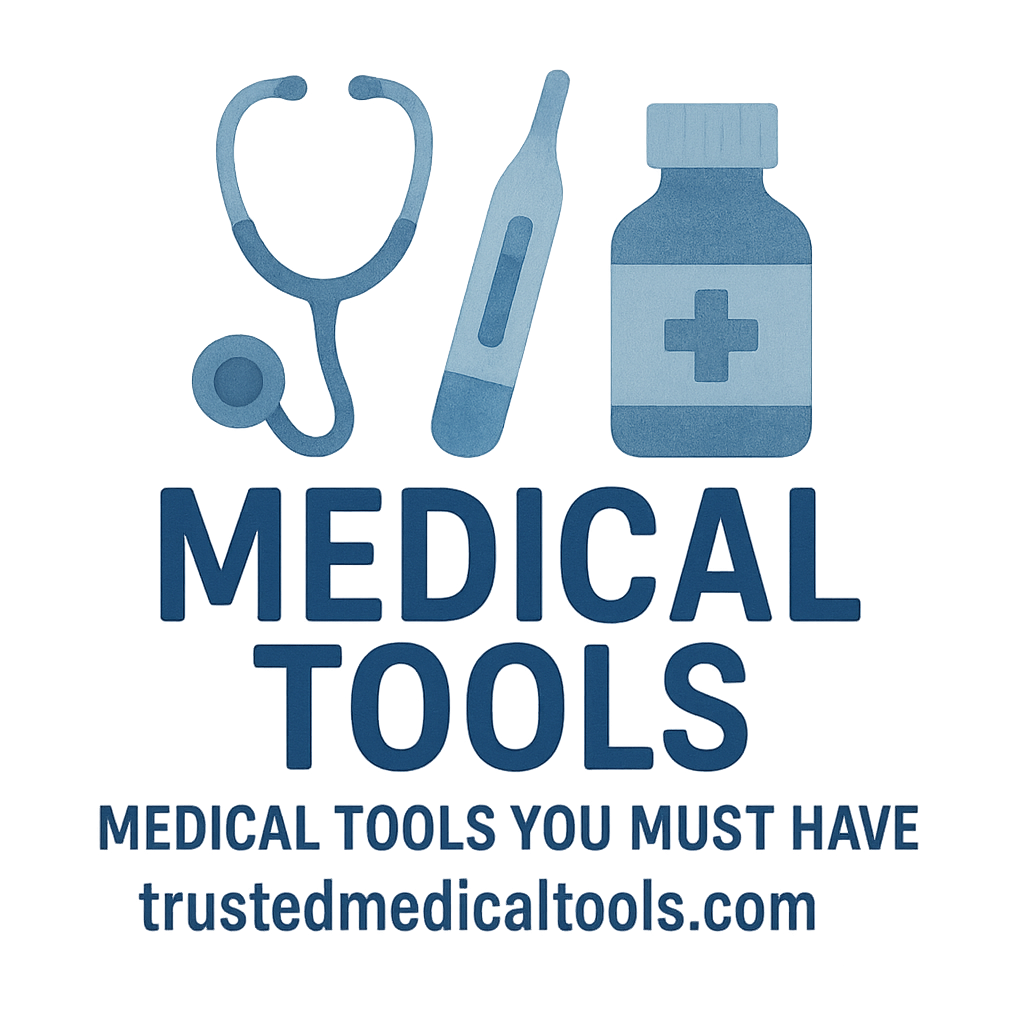Introduction: The Importance of Having Medical Tools at Home
When accidents happen at home, having the right medical tools readily available can make a huge difference in how quickly you can treat the injury. Whether it’s a minor burn from the kitchen, a cut from a kitchen knife, or a sprain from a slip, treating these injuries promptly can prevent complications and promote faster healing. In this article, we’ll cover 10 essential medical tools that should be part of every household’s first aid kit. Having these tools on hand ensures you can respond effectively to burns, cuts, and sprains, providing relief and minimizing the risk of infection or further injury.
1. First Aid Kits: The Foundation of Your Home Medical Setup
A first aid kit is the most crucial medical tool you can have in your home. It’s the foundation of your home medical setup, designed to treat a variety of injuries, including burns, cuts, and sprains. First aid kits come in all shapes and sizes, but the key is to ensure that your kit includes the right supplies for immediate care.
Why Every Household Needs a First Aid Kit
Whether you’re dealing with a simple cut or a more serious injury, having a first aid kit allows you to act quickly. It’s essential to have one in a visible, accessible location, whether that’s in your kitchen, bathroom, or another common area.
Essential Components for Treating Burns, Cuts, and Sprains
Look for a first aid kit that includes the following:
- Sterile gauze pads for dressing wounds.
- Burn gel for treating burns.
- Elastic bandages for sprains.
- Antiseptic wipes for disinfecting cuts.
- Adhesive bandages for minor wounds.
For more detailed suggestions on building your own first aid kit, check out this buying guide.
2. Burn Gel or Burn Cream: Immediate Relief for Burns
Burns are one of the most common household injuries, and having burn gel or burn cream at home can provide immediate relief. These gels are designed to cool the burn and provide a barrier to prevent infection.
How Burn Gel Helps with Healing
Burn gels work by cooling the area, reducing pain and swelling. They also promote faster healing by hydrating the skin, which can prevent scarring.
Types of Burn Gels to Keep in Your Home
Look for burn gels that contain Aloe Vera or Lidocaine, both of which are known for their soothing and healing properties. For severe burns, it’s essential to seek professional medical care.
For a variety of burn care tools, visit the first aid section on our website.
3. Sterile Gauze Pads: The Best Option for Cuts and Wounds
Whether you’re dealing with a deep cut or a minor scrape, sterile gauze pads are an absolute must. These pads help control bleeding, protect the wound from infection, and provide a clean environment for healing.
Why Gauze is a Must-Have for Wound Care
Gauze pads are highly absorbent and provide a sterile covering for wounds. They also help to cushion the area and prevent further injury, making them indispensable for any first aid kit.
How to Use Sterile Gauze for Cuts and Scrapes
For cuts and scrapes, clean the wound with an antiseptic wipe, apply the gauze pad, and secure it with medical tape. Ensure the gauze covers the entire wound to prevent infection.

4. Elastic Bandages: Essential for Sprains and Strains
Sprains and strains are common injuries that can happen at any time, whether you’re playing sports or simply walking around the house. Elastic bandages are flexible, adjustable, and perfect for providing support and reducing swelling.
How Elastic Bandages Help with Sprains
Elastic bandages, such as ACE bandages, are specifically designed to compress the injured area, helping to reduce swelling and providing support to injured ligaments and muscles.
The Proper Way to Apply an Elastic Bandage
When applying an elastic bandage, start at the farthest point from the heart (for example, your ankle or wrist) and wrap toward the heart. Ensure it’s snug but not too tight to avoid cutting off circulation.
For more on sprain treatments, see our guide on monitoring devices.
5. Antiseptic Wipes: For Disinfecting Cuts and Scrapes
Before you treat a wound, it’s crucial to disinfect the area. Antiseptic wipes are a quick and easy way to clean a wound and reduce the risk of infection.
Why Antiseptic Wipes Are Crucial for Infection Prevention
These wipes kill bacteria and other pathogens on the skin, providing a clean environment for the wound to heal. They’re especially useful in emergency situations when you don’t have access to running water or soap.
Using Antiseptic Wipes Effectively
Wipe the area gently around the wound, avoiding any direct contact with the wound itself to prevent irritation. Always use a new wipe for each injury to avoid cross-contamination.
6. Ice Packs: Cooling Down Sprains and Reducing Pain
An ice pack can be a lifesaver when you’re dealing with sprains, strains, or any injury that causes swelling. Ice helps reduce pain, swelling, and inflammation.
How Ice Helps with Sprains and Injuries
By applying cold to an injured area, ice causes blood vessels to constrict, which reduces swelling and numbs the area to alleviate pain.
Different Types of Ice Packs for Home Use
There are many types of ice packs available, from reusable gel packs to instant cold packs. Choose one that’s easy to use and fits the area you’re treating.
7. Scissors: Perfect for Cutting Bandages and Gauze
Scissors are one of those medical tools you never think about until you need them. Having a pair of medical scissors in your kit allows you to cut bandages, gauze, and even clothing in an emergency.
Why You Should Have Medical Scissors on Hand
Medical scissors are designed to safely cut through materials without causing injury, especially useful for cutting adhesive bandages or gauze.
Choosing the Right Scissors for Medical Use
Look for scissors with blunt tips for safety, and ensure they are made from durable, corrosion-resistant materials.
8. Adhesive Bandages: Quick Fix for Minor Cuts
For small cuts and abrasions, adhesive bandages are ideal. They’re easy to apply and provide a protective covering to keep the wound clean.
Why Adhesive Bandages Are Handy for Quick Treatment
Adhesive bandages are easy to use and perfect for quick treatment, offering protection while allowing the wound to breathe and heal.
How to Properly Use Adhesive Bandages
Clean the wound, apply a small amount of antiseptic if necessary, and place the adhesive bandage over the injury. Be sure to change the bandage regularly.
9. Tweezers: For Removing Splinters and Small Debris
Splinters, dirt, and small debris can be a real pain, but tweezers make removal quick and easy. Tweezers are especially helpful for treating wounds caused by minor injuries like splinters.
How Tweezers Can Assist in Removing Debris
Use tweezers to grasp the debris gently and pull it out in the same direction it entered. Be sure to clean the area after removal to avoid infection.
Sterilizing Tweezers for Safe Use
Always disinfect your tweezers before and after use to ensure safety. You can sterilize them with rubbing alcohol or boiling water.
10. Medical Tape: For Securing Bandages and Gauze
Medical tape is another essential tool for any home first aid kit. It’s used to secure bandages and gauze pads, ensuring they stay in place while you wait for medical attention.
Choosing the Right Medical Tape for Your Home First Aid Kit
Look for hypoallergenic medical tape, especially if you’re sensitive to adhesives. Medical tape should be strong enough to hold bandages in place but gentle on your skin to avoid irritation.
How to Use Medical Tape Effectively
Simply tear off the appropriate length of tape, place it over the edges of the gauze or bandage, and press down to secure it.
Conclusion: Be Prepared for Common Injuries at Home
Having the right medical tools at home can make a significant difference in your ability to manage minor injuries like burns, cuts, and sprains. By investing in these 10 essential tools, you’ll be ready to handle most common household injuries with ease and confidence. Always keep your first aid kit stocked and up-to-date, and don’t forget to check your tools regularly for expiration dates or damage. For more information on medical tools and home health care, explore our comprehensive resources on home essentials.
FAQs
- What should be in a basic first aid kit?
A basic first aid kit should include sterile gauze, adhesive bandages, antiseptic wipes, burn gel, scissors, and medical tape. - How do I treat a minor burn at home?
For minor burns, rinse with cool water, apply burn gel, and cover with sterile gauze. Seek medical attention if the burn is severe. - How do I properly apply an elastic bandage for a sprain?
Begin wrapping the bandage from the furthest point of the injury, moving toward the heart, and ensure the bandage is snug but not tight. - Can I reuse gauze pads?
No, gauze pads should be used only once to prevent contamination and infection. - When should I seek medical help for a cut?
Seek medical help if the cut is deep, won’t stop bleeding, or shows signs of infection like redness or swelling. - Are there different types of burn creams?
Yes, burn creams vary, with some containing aloe vera, lidocaine, or other soothing agents for faster healing. - What is the best way to store medical tools at home?
Store medical tools in a clean, dry, and easily accessible location, such as a first aid kit, to ensure they’re ready when needed.
Alat


